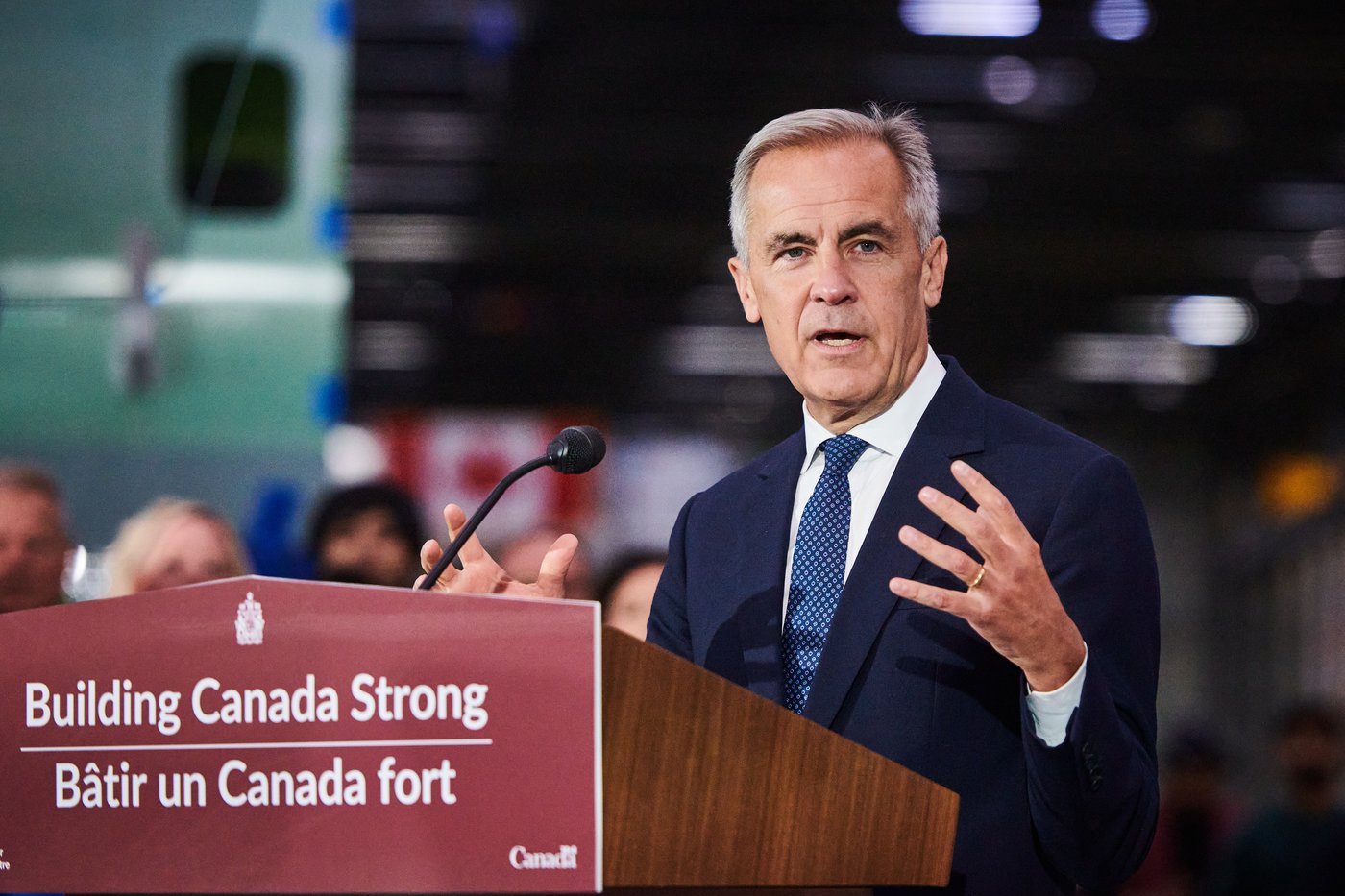Bank of Canada holds rate steady but warns more increases are possible — even as markets bet they’re done
The Bank of Canada has decided to keep its benchmark interest rate steady at five per cent, the second straight time the central bank has done so and a sign it may be moving to the sidelines after raising the cost of borrowing 10 times since last year.
The move was widely expected by economists and investors who follow the central bank, after a slew of data points in recent months — from GDP, to jobs, to inflation itself — painted a picture of an economy that was slowing down.
Eight times a year, the central bank meets to decide on where to set its benchmark rate, known as the target for the overnight rate, which impacts the rates that retail banks pay for short-term loans.
All things being equal, the central bank raises its rate when it wants to slow down an overheated economy, and cuts it when it wants to stimulate borrowing, spending and investment.
After slashing its rate in the early days of the pandemic to keep the economy humming, in early 2022 the bank began to aggressively raise its rate in order to slay inflation, which had risen to its highest level in 40 years.
The bank taking the cost of borrowing from functionally zero per cent to five per cent in barely more than a year-and-a-half slammed the brakes on spending and borrowing, wrestling the inflation rate from 8.1 per cent in the summer of 2022 to 3.8 per cent last month.
From the bank’s perspective, inflation seems to be heading in the right direction, but in its statement announcing its decision, the bank makes it clear it doesn’t think the inflationary dragon has been fully slayed just yet.
“In Canada, there is growing evidence that past interest rate increases are dampening economic activity and relieving price pressures,” the bank said. “Consumption has been subdued, with softer demand for housing, durable goods and many services.”
The bank projects the economy to continue to cool enough to bring inflation back to its two per cent target some time in 2025, a forecast that would suggest the bank is happy to stand on the sidelines until that happens.
Slowing economy
But it did leave the door open a crack to another rate hike, if necessary. “Governing Council is concerned that progress toward price stability is slow and inflationary risks have increased, and is prepared to raise the policy rate further if needed.”
In central bank-speak, that’s the bank saying that it is willing to raise borrowing rates by even more if it has to, but investors are betting the threat is most likely an empty one.
WATCH | Bank of Canada governor Tiff Macklem explains what it would take for the bank to hike again:
Featured VideoBank of Canada governor Tiff Macklem, who held rates at 5% on Wednesday, says the bank needs to see ‘clear evidence’ that core inflation is moving down.
Trading in investments known as swaps imply there’s about a five per cent chance of a rate hike at the bank’s next policy meeting in December. And pricing suggests that investors think the bank’s rate will be lower next summer than it is today.
The Canadian dollar also sold off by about a quarter of a cent on the news. That’s another sign that investors think further rate hikes are unlikely.
Frances Donald, chief economist at Manulife Investment Management, is among those who thinks the bank is done hiking but says there are lots of good reasons why they are reluctant to come out and say that.
“I’m not sure they can say the quiet part out loud,” she told CBC’s Metro Morning radio program on Wednesday, adding the bank is afraid any public statement suggesting they’re done hiking could lead people to interpret it to mean rate cuts are coming.
“If people believe there’s rate cuts, maybe they’ll start to go out and inflate housing again and spend and then we’re kind of back in this inflationary mess,” she said. “So just like a parent that’s trying to control their child’s behaviour, I think we’re probably going to be told one thing, but there might be something else happening behind the scenes.”
Bilal Hasanjee, a strategist with money manager Vanguard, agrees that the central bank is trying a “delicate balancing act” of talking tough on inflation without harming the economy more than they have to, but obviously fearful of implying they are done.
In January, the central bank hinted it may be done hiking “and it resulted in an almost immediate reaction in the real estate market, prices jumped within weeks,” he notes.
“It’s more messaging that they have to manage,” he said, “but if we start seeing job losses and mortgage defaults, that is going to change the calculus pretty rapidly.”
Carrie Freestone, an economist with RBC, also thinks the bank is done with rate hikes, but is reluctant to admit that rates are going to stay where they are for a while.
“The Bank of Canada does not want to explicitly state that,” she told CBC News in an interview. “They don’t want to say that they will go ahead and pause and sit on the sidelines, because there are increasingly upside risks to inflation.”

If the central bank is indeed done with rate hikes, it’s not a moment too soon for homeowners like Lindsay and Josh Spanik. They bought what they call their “forever home” in Burlington, Ont., in 2020 at a fixed rate loan that was within their budget.
But that loan was up for renewal this year, smack dab in the middle of the central bank’s hikes, which left Lindsay doing what millions of homeowners have been doing for the first time this year: obsessing over the Bank of Canada
“I had never watched the interest rates as much as I have in probably the last year or two and when they started to climb, I [thought] they are going to stop in the mid-fours, maybe the high- or the low-fives,” she said. “There’s no way that they’re gonna go into fives or sixes … but they did.”
They ended up renewing this month on another fixed rate loan for the certainty of knowing their payment would not go up, but that peace of mind came with an added cost of an extra $1,200 above and beyond what they were paying before.
That’s a big amount for any family to absorb, but it’s one that they say they will try to meet by cutting to the bone discretionary spending on things like dining out and vacations.
“Our hope, obviously, would be that they would come back down,” Josh said. “But if they stay that way, then it’s going to be the way of life that we need to adapt to.”
Their mortgage broker, David Giustizia, says a lot of his clients are in the same boat of having to adapt to higher rates than anyone anticipated, and while he understands the need to tame inflation, he’s critical of the central bank.
“Their coming out and saying rates are going to stay low for long became the basis of a lot of decisions for mortgage professionals and for Canadians,” he said. “More people went into variable rate mortgages on the basis of that … so for them to have those remarks and then turn around 18 months later and move through one of the fastest rate hike cycles that Canadians have ever seen in history, I think was unprecedented.”



